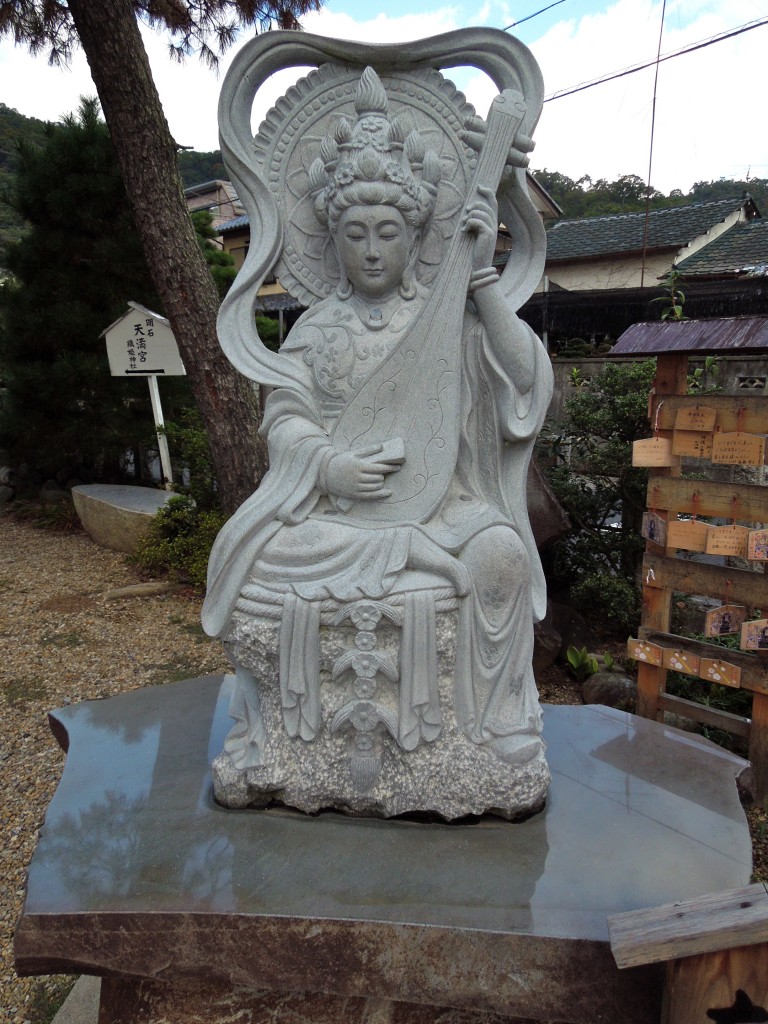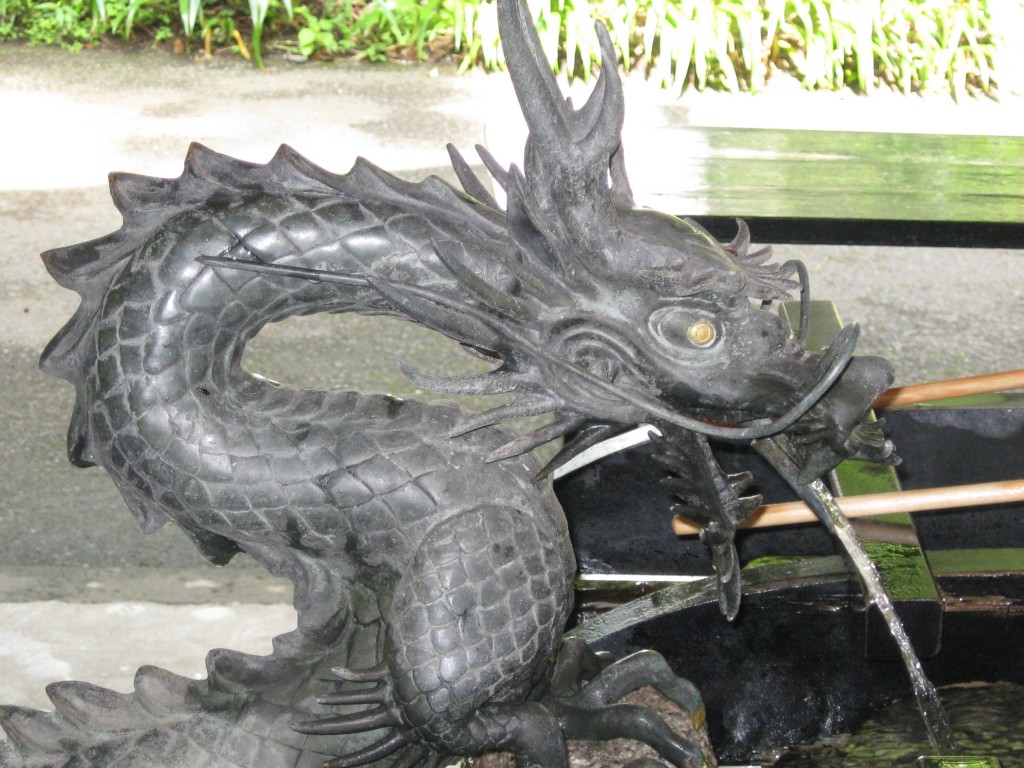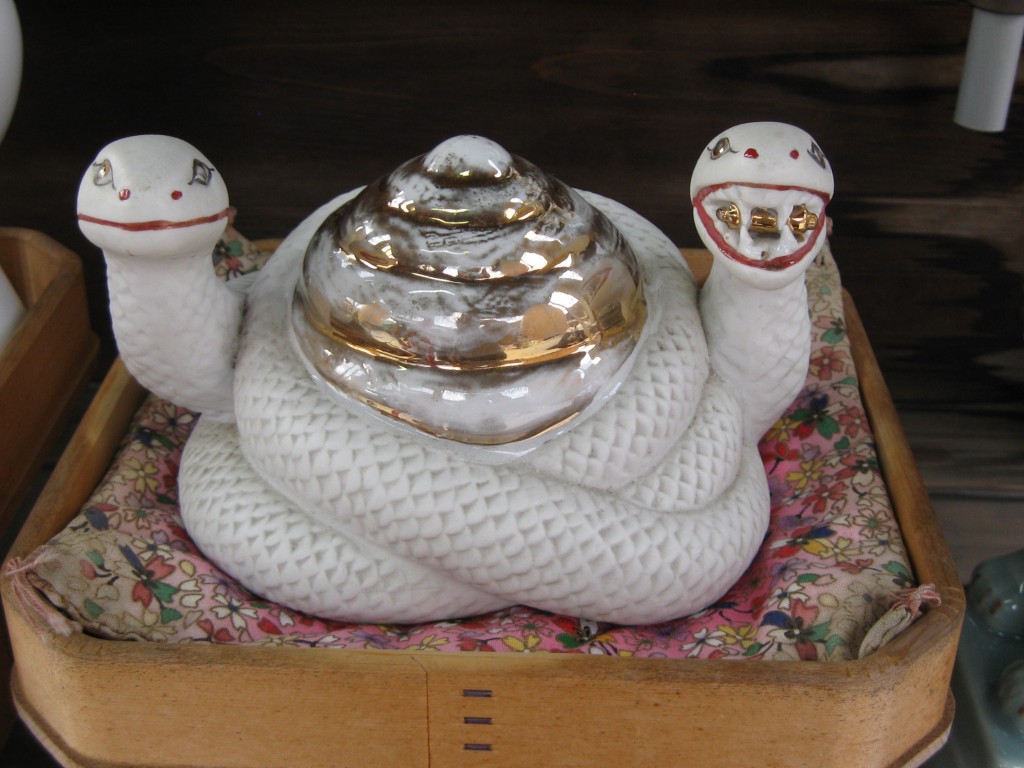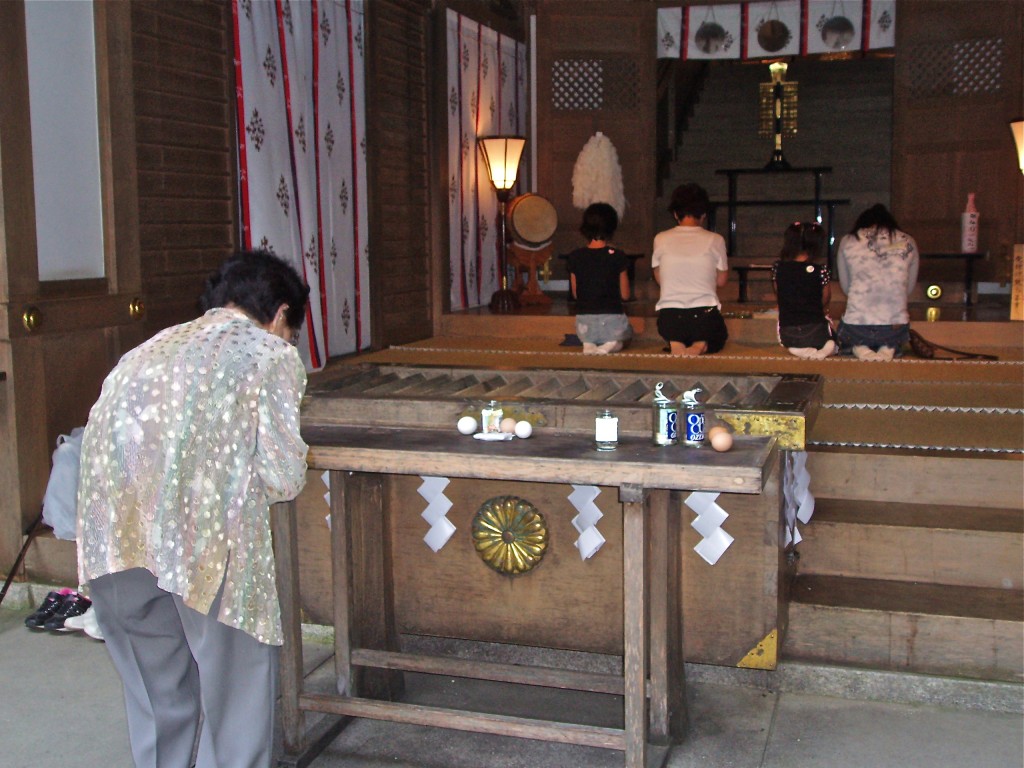What on earth does St Patrick’s Day have to do with Shinto, you may well be wondering? Well, one aspect that caught my attention concerning the celebration of Ireland day was the matter of snakes. Look at the following by way of example:
“Saint Patrick’s Day (March 17) is marked with celebrations and remembrance of the great Irish saint who awakened the dead and drove out the snakes from the Island. Snakes here symbolize the inner demons and pagans, to let the radiance of God shine forth. With more than 35 million Americans having Irish roots we have a great time on this feast day of St. Patrick. We let our hair down and guzzle green beer, wear the pious symbol of trinity, shamrock and send Irish Blessings to our loved ones. The message is to drive out the snakes of lust, anger, and greed and give way to generosity, love and peace. Cheers!”

Benten, muse of the arts, dance and music, here seen playing the biwa (lute). Her familiar are white snakes, suggestive of regrowth and fertility of mind.
Snakes play a large part in pagan cultures, and in Shinto in particular. It’s the reason why they became demonised by Christianity and used as a symbol of paganism. In the Bible, famously, they act as a representative of evil in the temptation of Eve.
In Japan snakes are best known as the familiars of Benten, goddess of the arts. Since she’s associated with watery depths, one imagines they are water snakes. Inevitably they are white snakes, since that’s the distinctive mark of purity and the divine.
But there is more to the snake cult in Japan than just Benten. The most famous story is that of Omiwa, where the kami manifested itself in the form of a snake according to a mythological story. Visit Miwa Shrine now, and you’ll find eggs laid out as offerings for the snake kami in honour of the ancient cult.
The following excerpts from the Kokugakuin encyclopedia make plain how close was the identification of the snake with fertility and regeneration (because of its ability to slough off skin and start anew).
Another episode in Nihongi relates that Ōmononushi was wed to a woman named Yamato Totohimomosohime, but visited her only at night; when she requested to see his true form, he hid in her comb case, where she found him as a small snake. After her alarm caused the snake to flee in shame to Mt. Miwa, the woman felt remorse and used chopsticks to stab herself mortally in the genitals.
Kojiki‘s tale of Ikutamayoribime is similar, with the maiden becoming pregnant by a young man who visits her only at night. Anxious to learn the identity of their daughter’s lover, her parents tie a thread to the hem of his garments and follow the thread the next morning, whereupon they find it leads to the shrine at Mt. Miwa. These legends are the basis for the broad category of legends of the “Mt. Miwa type.”
Another episode in Nihongi relates that Ōmononushi was wed to a woman named Yamato Totohimomosohime, but visited her only at night; when she requested to see his true form, he hid in her comb case, where she found him as a small snake. After her alarm caused the snake to flee in shame to Mt. Miwa, the woman felt remorse and used chopsticks to stab herself mortally in the genitals.
Kojiki‘s tale of Ikutamayoribime is similar, with the maiden becoming pregnant by a young man who visits her only at night. Anxious to learn the identity of their daughter’s lover, her parents tie a thread to the hem of his garments and follow the thread the next morning, whereupon they find it leads to the shrine at Mt. Miwa. These legends are the basis for the broad category of legends of the “Mt. Miwa type.”
One should not forget too that the dragon has a snake like body, such that depictions often look like a snake with a dragon head and legs. The cult of the dragon deity as sea kami is believed to have been particularly spread by practitioners of Shugendo, a form of mountain asceticism. Also the serpent kami of Konpira Shrine in Shikoku was worshiped by seafarers who revered the deity as a tutelary who would protect them from the perils of the sea – “During the Edo Period the Indian deity Kumbhīra (a dragon king sea deity) was conflated with Konpira, and the cult spread along with the development of shipping and the creation of transportation networks,’ notes the Kokugakuin encyclopedia.

Dragons have snake-like bodies, as can be seen here, incorporating the regenerative and other qualities of the creature.


